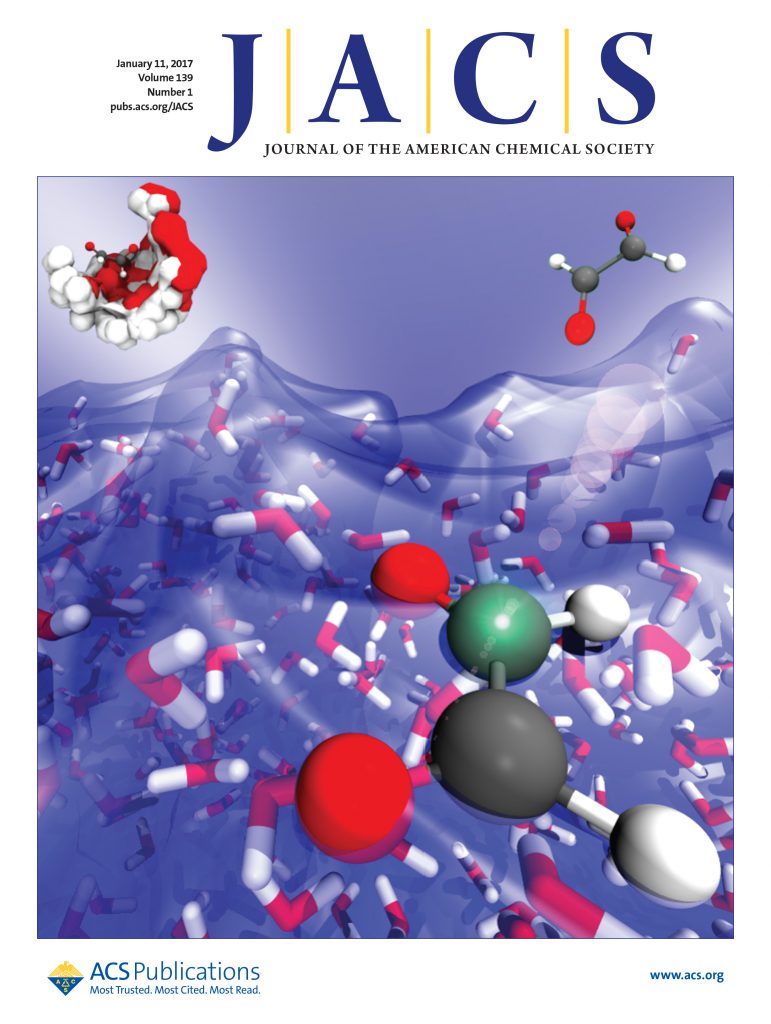Entropy-Driven Structural Evolution in Ceramic Oxides.
IF 15.6
1区 化学
Q1 CHEMISTRY, MULTIDISCIPLINARY
引用次数: 0
Abstract
High-entropy ceramics, with five or more elements randomly occupying the same cation crystallographic sites, offer vast compositional diversity and unique properties for material design and applications. However, for many dissimilar elements, entropic stabilization cannot overcome the enthalpic barrier to cation substitution. As a result, most high-entropy ceramics incorporate only a few similar elements, limiting the in-depth exploration of the effect of entropy on ceramic properties. Here, we first use density functional theory to model fluorite crystal structures composed of 1-10 elements and then experimentally present practical fluorite oxide nanostructures containing 1, 3, 8, and 15 metals, as well as a record-breaking 25-element high-entropy ceramic incorporating a diverse palette of rare-earth, transition, alkaline, p-block, and noble metals. As entropy increases, structural and configurational disorder in the solid solution rises, altering structural features such as lattice distortion, crystallinity, homogeneity, defect density, and thermal stability. This research provides new insights and understanding of the role of entropy in stabilizing compositionally complex ceramics.陶瓷氧化物的熵驱动结构演化。
高熵陶瓷,五种或更多的元素随机占据相同的阳离子晶体位置,为材料设计和应用提供了巨大的成分多样性和独特的性能。然而,对于许多不同的元素,熵稳定不能克服阳离子取代的焓势垒。因此,大多数高熵陶瓷只包含少数相似的元素,限制了熵对陶瓷性能影响的深入探索。在这里,我们首先使用密度功能理论来模拟由1-10种元素组成的萤石晶体结构,然后通过实验呈现含有1、3、8和15种金属的实际萤石氧化物纳米结构,以及包含稀土、过渡、碱性、p块和贵金属的25种元素的高熵陶瓷。随着熵的增加,固溶体中的结构和构型紊乱会增加,从而改变结构特征,如晶格畸变、结晶度、均匀性、缺陷密度和热稳定性。该研究为熵在稳定复合陶瓷中的作用提供了新的见解和认识。
本文章由计算机程序翻译,如有差异,请以英文原文为准。
求助全文
约1分钟内获得全文
求助全文
来源期刊
CiteScore
24.40
自引率
6.00%
发文量
2398
审稿时长
1.6 months
期刊介绍:
The flagship journal of the American Chemical Society, known as the Journal of the American Chemical Society (JACS), has been a prestigious publication since its establishment in 1879. It holds a preeminent position in the field of chemistry and related interdisciplinary sciences. JACS is committed to disseminating cutting-edge research papers, covering a wide range of topics, and encompasses approximately 19,000 pages of Articles, Communications, and Perspectives annually. With a weekly publication frequency, JACS plays a vital role in advancing the field of chemistry by providing essential research.

 求助内容:
求助内容: 应助结果提醒方式:
应助结果提醒方式:


